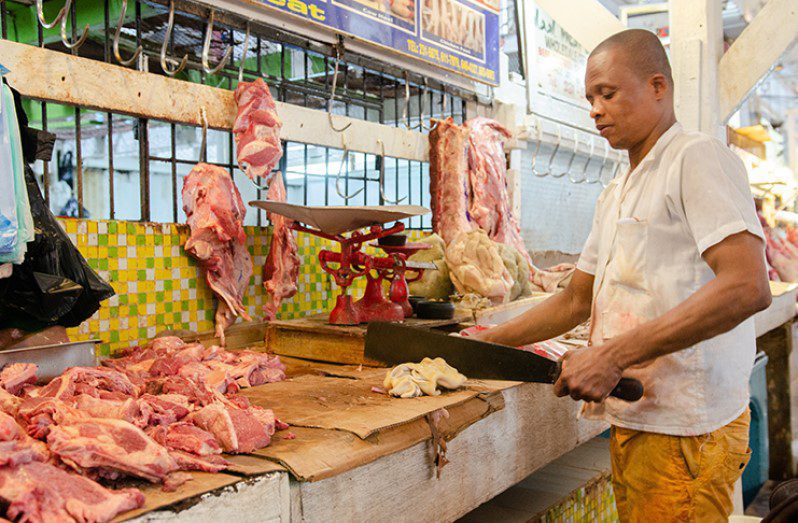GUYANA’S livestock sub-sector is reaching new heights due to massive investments, which will help achieve the food security target by 2025.
The livestock sub-sector was estimated to have grown by 4.7 per cent, in the first half of 2023. This performance was recorded in the Ministry of Finance’s Mid-year report for 2023.
“During this period, the production of eggs, poultry meat, beef and mutton expanded by 6.1 percent, 6.1 percent, 9.3 percent, and 25 percent, respectively,” the Ministry of Finance said.
Notably, the Ministry said that, at the end of June 2023, $500 million was expended of the $1.1 billion budgeted for the regulation, support and development of the dairy and meat industries.
Another notable achievement in the industry in the first half was the reduction of the animals’ stress levels and improvement in weight.
“These were supported by cross breeding with black belly sheep and other breeds, a new management strategy, and climate-smart pens,” the report read.
President, Irfaan Ali has constantly echoed that Guyana will see the livestock sub-sector expand massively in the coming years.
While speaking at the launch of the Caribbean Week of Agriculture (CWA) earlier this month, the Head of State disclosed that the country’s meat production alone is projected to increase by 43 per cent from over 47,000 metric tonnes in 2020 to more than 67,000 metric tonnes in 2023, with a further 50 per cent growth anticipated in 2025.
President Ali said that Guyana is also collaborating with Barbados to increase mutton production. This will see the Mahaica/Berbice region being well positioned to become the livestock capital of the Caribbean Community (CARICOM).
As part of this initiative, the Barbadian government will be supplying Guyana with 1,000 Black Belly Sheep. Of that number, 473 have already been transported to Guyana and a third shipment is expected shortly.
To advance the industry further, 13,000 acres of pasture have been developed for cattle farmers, and the construction of two abattoirs to international standards is underway. Additionally, two dairy processing facilities are under construction, a total investment of over US$30 million.
With self-sufficient poultry production already achieved, budgetary allocations have been made for the construction of a broiler breeding facility in 2023 to reduce dependence on hatching egg imports.
Finally, the government is seeking co-investment opportunities in areas such as a sausage plant, a protein plant for aquaculture, and a chicken nugget facility to meet local and regional demand.
President Ali, in his remarks, noted that the Caribbean Week of Agriculture was an important forum for leaders to not only review their success but to address the remaining targets.
Ali revealed that, in order for the region to achieve its ambitious food security targets by 2025, in excess of 1.4 million metric tons of commodities will have to be produced over the next two years.
“We are committed to lead, and to lead as a good example, vision 25 by 2025 represents a tipping point for the Caribbean. Failure must not be contemplated. We must persevere. Paralysis of action will be fatal,” the Guyanese Head of State said.
The Ministerial Task Force, which is chaired by Guyana’s agriculture Minister, Zulfikar Mustapha, has partnered with the CARICOM Private Sector Organisation (CPSO) to identify commodities for concentrated regional policy support.
According to President Ali, these commodities include poultry meat, corn, soya beans and rice for feed production, meat (beef, pork and mutton), niche vegetables and coconut products.


.jpg)











